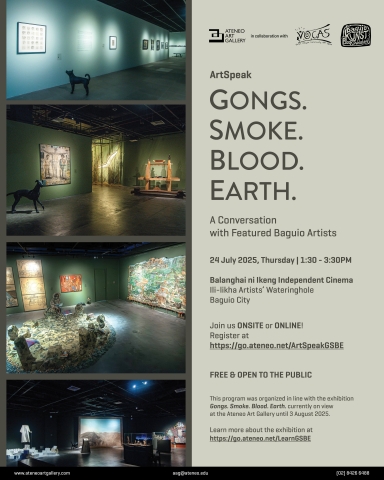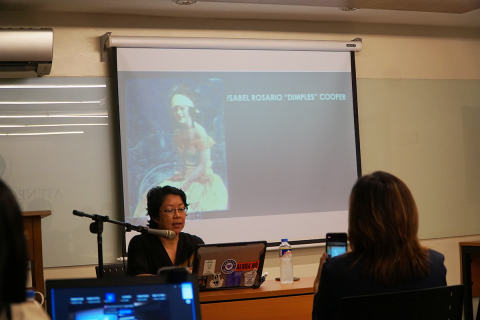Remembering 'Beyond the Gloss and Discipline' at ALiWW
31 Oct 2024
Last September, the Ateneo Library of Women’s Writing (ALiWW), in partnership with the Department of Fine Arts, University Archives, and the Ateneo Martial Law Museum, opened an exhibit titled Beyond the ‘Gloss and Discipline’: Martial Law as Written by Women Journalists in the Philippines, which ran from 18 to 30 September at the ALiWW Reading Room. The exhibit highlighted the pivotal contributions of women journalists during the Martial Law era under President Ferdinand E Marcos Sr, whose stories often broke through the regime’s heavy censorship and state propaganda. The exhibit’s title is inspired by a phrase coined by journalist Paulynn Sicam in 1987, “gloss and discipline,” reflecting how the regime masked repression with a controlled image.
The exhibit featured women journalists such as Sicam, Jo-Ann Maglipon, and Ceres Doyo, whose perspectives and tenacious reporting defied a harsh political environment. Women journalists faced particular obstacles in publishing their work during a time when press freedoms were severely restricted, yet they remained undeterred in their pursuit of the truth. Through their work, they navigated a socio-political landscape where their voices had to carry an extra edge of resilience. The exhibit’s primary aim was to honor the courage these women displayed, reminding us all of the critical role of a free press and the strength required to stand up to authoritarianism.
On display were carefully curated materials from Sicam, Maglipon, and Doyo, alongside issues of Guidon — Ateneo’s student publication — produced during Martial Law. Articles, books, drafts, and photographs were exhibited across the ALiWW Reading Room, some in physical displays and others in digital format. Visitors can explore these materials on interactive screens, diving into the words of women who defied censorship to report on the violence, corruption, and suffering inflicted by the regime. A second digital display invites students to engage with provocative questions on media freedom and government accountability, encouraging them to reflect on the courage and commitment these women exemplified.
The exhibit’s launch featured student readings of excerpts from Eggs by Arlene Babst and The Truth about Journalism by Letty Jimenez Magsanoc. These readings provided a window into the myriad spaces and strategies that women writers used to express dissent and critique the authoritarian grip on society. Their writings—bold and fearless—stood as powerful testaments to the resilience of female journalists who championed truth in a time of repression.
Jo-Ann Maglipon was also present during the opening, sharing stories of her experiences as a journalist during Martial Law. She recounted how editors were often fearful of critical stories, yet she persisted in reporting on communities deeply affected by the regime, such as her coverage in Mindanao. Despite the lack of support and the eventual imprisonment, Maglipon continued her mission to capture the truth. She reflected on the challenges unique to women journalists but spoke also of the solidarity and support she found through groups like Women and Media Now, which helped women journalists sharpen their skills and push boundaries together.
The exhibit honors these women whose legacy of fearless journalism endures. Their example continues to inspire young female journalists today, many of whom seek justice through truth-telling and use their voices to represent the voiceless. Beyond the Gloss and Discipline serves as a tribute to their courage, a reminder of the power of media, and a testament to the resilience required to stand firm for democracy.





![[AAG] Art Workshops - Cosmic Garden Poster](/sites/default/files/styles/large/public/2025-07/%5BAAG%5D%20Art%20Workshops%20-%20Cosmic%20Garden%20v2.jpg?itok=Z52TVwDS)

